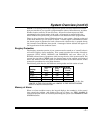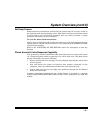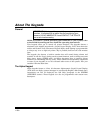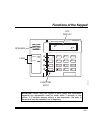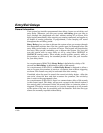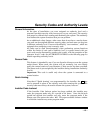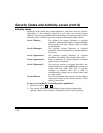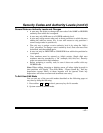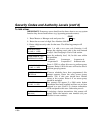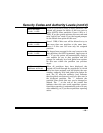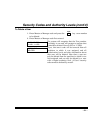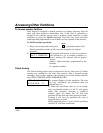
– 15 –
Security Codes and Authority Levels
General Information
At the time of installation, you were assigned an authority level and a
personal four-digit security code, known only to you and yours. The security
code must be entered when arming and disarming the system. The authority
level defines the system functions that you can perform.
As an additional safety feature, other users that do not have a need to know
your code can be assigned different security codes, and each user can be given
a different authority level. Users are identified by "user numbers", which are
assigned when assigning a user's security code.
All codes can be used interchangeably when performing system functions
within the limits of each code's authority level (a system armed with one
user's code can be disarmed by another user's code), with the exception of the
Operator Level C code. See AUTHORITY LEVELS on the following page for
details regarding authority levels.
Duress Code
This feature is intended for use if you are forced to disarm or arm the system
under threat. When used, the system will act normally, but can silently
notify the central station of your situation, if that service has been provided.
The duress code is pre-assigned by the installer during installation (authority
level 6).
Important: This code is useful only when the system is connected to a
central station.
Quick Arming
Note that if "Quick Arming" was programmed by the installer, the # key
can be pressed in place of the security code when arming the system. The
security code must always be used to disarm the system, however.
Installer Code Lockout
If the Installer Code Lockout option has been enabled, the installer may
enter the program mode only for a period of 24 hours. Once the 24-hour
period has expired the installer can only enter the program mode if the
Master user first enters the code + #65. This opens another 24-hour window
in which the installer may enter program mode.



